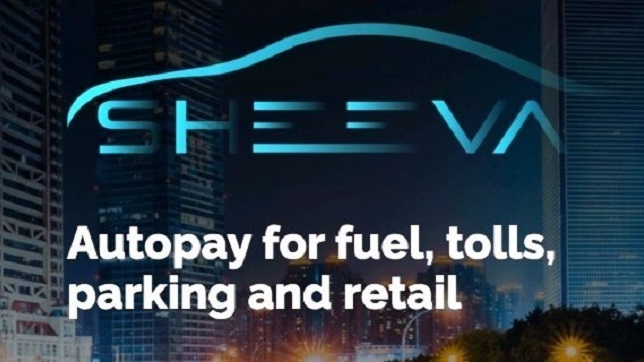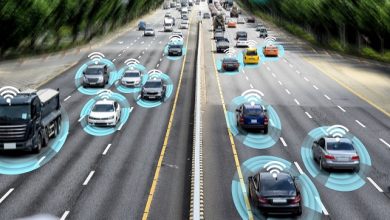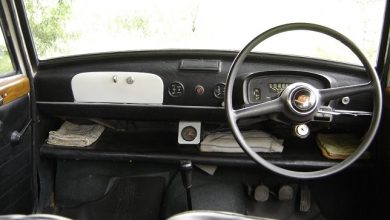The Dawn of Connectivity Monetization: What is Vehicle Location-Based Services (VLBS)?

Current Trends in Connected Vehicle Monetization
Connectivity has been offering an immense value to the vehicle owners via a new universe of connected features and services across critical consumer needs: safety, convenience, security, entertainment, and vehicle diagnostics. Almost all of India’s OEMs have started offering these features and services as a part of their connected vehicle strategy; prominent examples include Suzuki Connect, Hyundai blueLink, Tata iRA/ZConnect, Mahindra AdrenoX, and MG iSmart.
The automotive industry in India is going through a digital transformation. The vehicle is not merely a commodity for OEMs and Tier-1s. Its architectures are increasingly becoming software-defined to offer customization and monetize safety-critical features and infotainment to, ultimately, vehicle performance.
Though the monetization prospects in this segment are huge — and they are gradually being tapped across the entire automotive value chain in India — the features and services are still limited to the vehicle platform. The true disruption in monetization avenues and business models is happening outside the vehicle platform, where the vehicle becomes a part of either the driver’s digital ecosystem or a vehicle-centric services infrastructure.
By integrating the driver’s existing digital ecosystem, including smart devices, voice assistants, and other content and apps, a seamless user experience is being created to derive new value from the vehicle. At the same time, the utility of these new platforms is being analyzed for infrastructure-based services and solutions, like traffic management, city planning, usage-based insurance (UBI), shared mobility, and GNSS tolling. As well, it can enable easier access to essential services like fueling, parking and curbside pick-up/drive-thru.
Once the vehicle becomes a part of a larger ecosystem, the value perceived and derived can be transformational. To leverage these opportunities of the connected ecosystem around the vehicle, an extensive amount of data is being generated, gathered, stored, and analyzed to extract actionable insights. This data can have several attributes centred around driver preferences, services patterns, and many others, but the most significant among these attributes is location intelligence. The insights derived from other attributes remain static but when coupled with vehicle location, such attributes become dynamic and offer rich context. Vehicle Location Based Services (VLBS) encompasses the whole spectrum of services associated with position accuracy, including fueling, parking, tolling, curbside service, insurance, fleet management, along with smart city planning.
What enables VLBS?
Vehicle location has the power to transform the way transactions occur and services are delivered, collectively termed “in-vehicle commerce” or v-commerce. In the 1990s and 2000s, the boom in personal computers and the internet connected retailers and buyers directly, which was the first form of e-commerce. As smartphones proliferated in the late 2000s, commerce shifted to these new mobile computers we all carried in our pockets, and m-commerce was born. But through the history of these digital commerce formats, the following enablers, which are dubbed “LIPUN,” remained critical at each stage:
- Location (L): Source and destination of goods
- Identity (I): Know your customer (KYC)
- Presence (P): Customer authentication
- Ubiquitous Notifications (UN): Around-the-clock ability to connect
The next frontier of digital commerce will see integration into the vehicle, but the core enablers of “LIPUN” will remain the same. To create a seamless user experience akin to e-commerce & m-commerce, the vehicle platform needs to deliver on all these enablers simultaneously.
The Path to VLBS Monetization
The current set of solutions around VLBS are being delivered primarily in two modes – the latent service layer and the real-time service layer.
With the latent service layer, the data from the connected vehicles are stored over the cloud in a raw format. The conventional means of data cleaning, mining, and analysis are conducted to provide meaning. The solution providers have created aggregation and software platforms following data privacy compliances to perform the objective of deriving meaningful insights.
These insights can be categorized into various group, like vehicle location, vehicle operations, vehicle performance, traffic management and planning, and driving patterns. These insights are then integrated into Application Programming Interfaces (APIs) that are made open to partners or third-party application developers on licensing or subscription basis.
Through the latent service layer, few of the location-based services such as UBI, traffic management, fleet management, and service asset layout are leveraged extensively to create revenue streams for service partners. But due to the lack of real-time context, the direct value creation for customers and the inherent experience remains limited.
To create a direct value for customers/drivers, understanding their needs and wants are essential. And this can happen only if services can satisfy those needs and wants on a real-time basis or – as the marketing world likes to call it – in the “Moment of Truth.” The objective of the real-time service layer is not only to become aware of the real-time needs of a driver but also to connect those services directly to the driver.
The differentiating factor here is the use of location intelligence to provide real-time context to the service provider and not merely insight about their needs. In India, one service that comes close to the real-time service layer is the National Electronic Toll Collection (NETC) or FASTag. Though the toll payments are not in real-time, the service is delivered in real-time, with few of the VLBS enablers still at play.
FASTag: VLBS Enablers
| Enablers | Active | Remarks | |
| Location | ✔ | FASTag & NETC Mapper | |
| Identity | ✔ | NETC Mapper | |
| Presence | ✔ | FASTag | |
| Ubiquitous Notifications | × | Lacking due to No Connectivity |
The real-time context immediately unpacks opportunities, from becoming aware of driver needs, to triggering contextual alerts, and actively engaging the driver at every touchpoint across the entire user journey. This approach does not limit the service provider and driver to only service discovery and delivery. It pushes the frontier into the realm of digital payment, thus completing the entire transaction loop.
For drivers, the perceived value is in terms of convenience and seamless experience, while for service providers the real-time service layer offers an unmatched opportunity to enhance the user journey and experience. The user touchpoints can be personalized subjected to a driver profile while offering a premium solution for marketing attribution and customer loyalty, which are limited with other smart devices.
Akin to the latent service layer, the real-time service layer also deploys APIs customized for different services, with vehicle data and driver profiles analyzed and focused on delivering just-in-time services. This range of services can be bundled to create a new marketplace, enabling new business models to monetize connectivity.
The Sheeva.AI Solution
The ecosystem for real-time services in the automotive industry is continuously evolving and more so, due to the innovations in safety-critical applications like Advanced Driver Assistance Systems (ADAS), V2X Connectivity, and Autonomous Vehicles. Such technologies are pushing the boundaries for real-time vehicle connectivity and data processing. With VLBS, various technologies and solutions have reached a certain level of maturity in the market; one of the prominent solution providers in the space is Sheeva.AI.
The Sheeva.AI solution matches location intelligence and vehicle/driver needs with cloud-based services. The main upfront advantage for the OEMs/Tier-1s is that there is no need to modify the vehicle architecture. For the service providers, there is no need to install additional infrastructure to identify the driver and contextual needs. All the service assets (fuel stations, parking lots, toll plazas and retail locations) are geofenced on the Sheeva server as an integrated use case that interacts with service providers & payment processors via a “Single-API.”
Location intelligence is derived from Sheeva’s patented geolocation algorithm that can integrate into the vehicle’s telematics control unit (TCU) or in-vehicle infotainment (IVI) system, with access to CAN messages and the ability to detect vehicles with sub 2-meter accuracy and precision. This accurate vehicle location is automatically mapped to the integrated use case and addresses four core questions:
– Who is driving? (payment security and authentication)
– What do they need to pay for? (payment routing and point-of-sale notification)
– How much do they need to pay? (payment/invoice reconciliation)
– Who do they need to pay to? (payment transmission and settlement)
As opposed to a pull API, Sheeva’s Single-API is a push structure that can be utilized to proactively identify the driver’s needs and send context-driven alerts for a particular use case. Service providers can handle such alerts on their server for pushing targeted ads and automating the payment, which is routinely handled manually by the user. The structure provides an inexpensive means to build user stickiness and foster loyalty.
“LIPUN” Is Here To Stay
While Sheeva.AI distinctively makes use of location intelligence with its own set of infrastructure-agnostic solutions, other providers are also expanding the frontiers of VLBS in their own ways. But for the future of VLBS enablers, Sheeva.AI is the only platform that covers “LIPUN” factors comprehensively.
Today, automotive stakeholders often put the smartphone at the core of their location-based services offerings, as they see the ubiquity of these devices and the built-up app ecosystem. They also see the challenges associated with altering user behaviour away from their ingrained smartphone routines.
But take a closer look at the power of VLBS versus the smartphone. The smartphone’s location is inherently dynamic, inaccurate, power-hungry, and expensive, and they tend to be present with the user as opposed to the vehicle. This makes it impossible to proactively identify driver needs and complete an in-vehicle transaction loop with ease and speed to provide the best customer experience. It’s clear that you need to put the vehicle at the core when identifying the services or other driver needs and servicing them in a way that compliments the user journey on a smartphone.
Sheeva.AI’s goal is to remove any frictions in the user journey for vehicle-centric services such as fueling, tolling, parking, and curbside pick-up/drive-thru. Instead of a smartphone, use the vehicle to identify the need for such services while using push APIs to interact with the underlying smartphone application ecosystem to authorize, authenticate, and pay for the service. For example, if an oil marketing company (OMC) already has an active mobile application that drivers can use to pay for petrol, Sheeva will use existing endpoints of the service provider API to automate the part of the transaction that is typically handled by the user, including entering the fuel pump number and choosing the payment method when the user arrives at the fueling station to activate fueling.
VLBS is the much-needed paradigm shift aimed at building services around the vehicle while simultaneously leveraging the existing mobile application ecosystem to reinforce customer loyalty, a common Achilles heel for OEMs and service providers alike.
Author:

Ankit Bhatia
Business Development & Marketing Manager
Sheeva.AI
Ankit Bhatia is a Business Development & Marketing Manager at Sheeva.AI. He is responsible for developing & nurturing business prospects in OEMs & Tier-1s. He also manages the product management that includes use case validation, testing user experience, and managing go-to-market strategy.
Published in Telematics Wire




